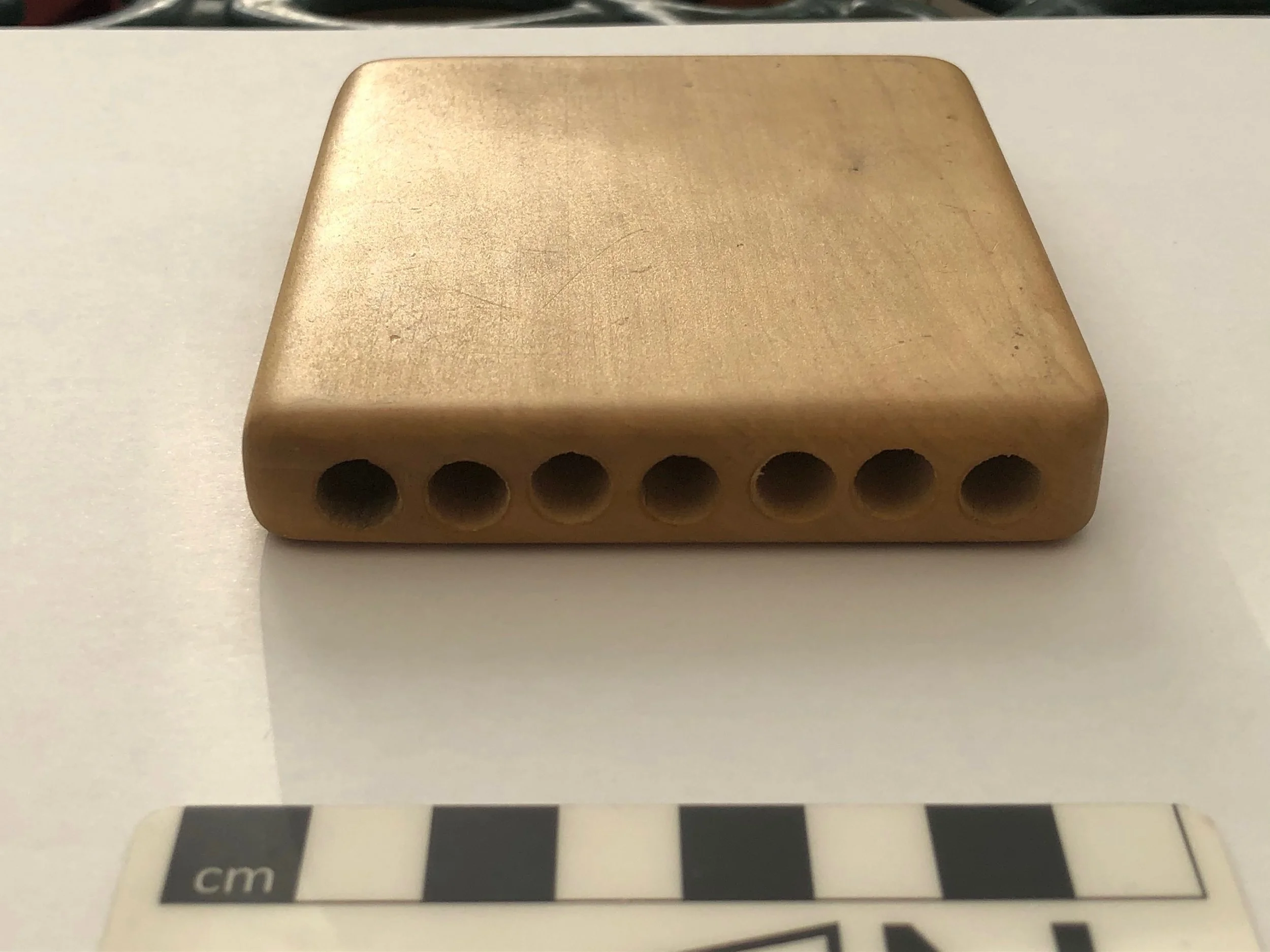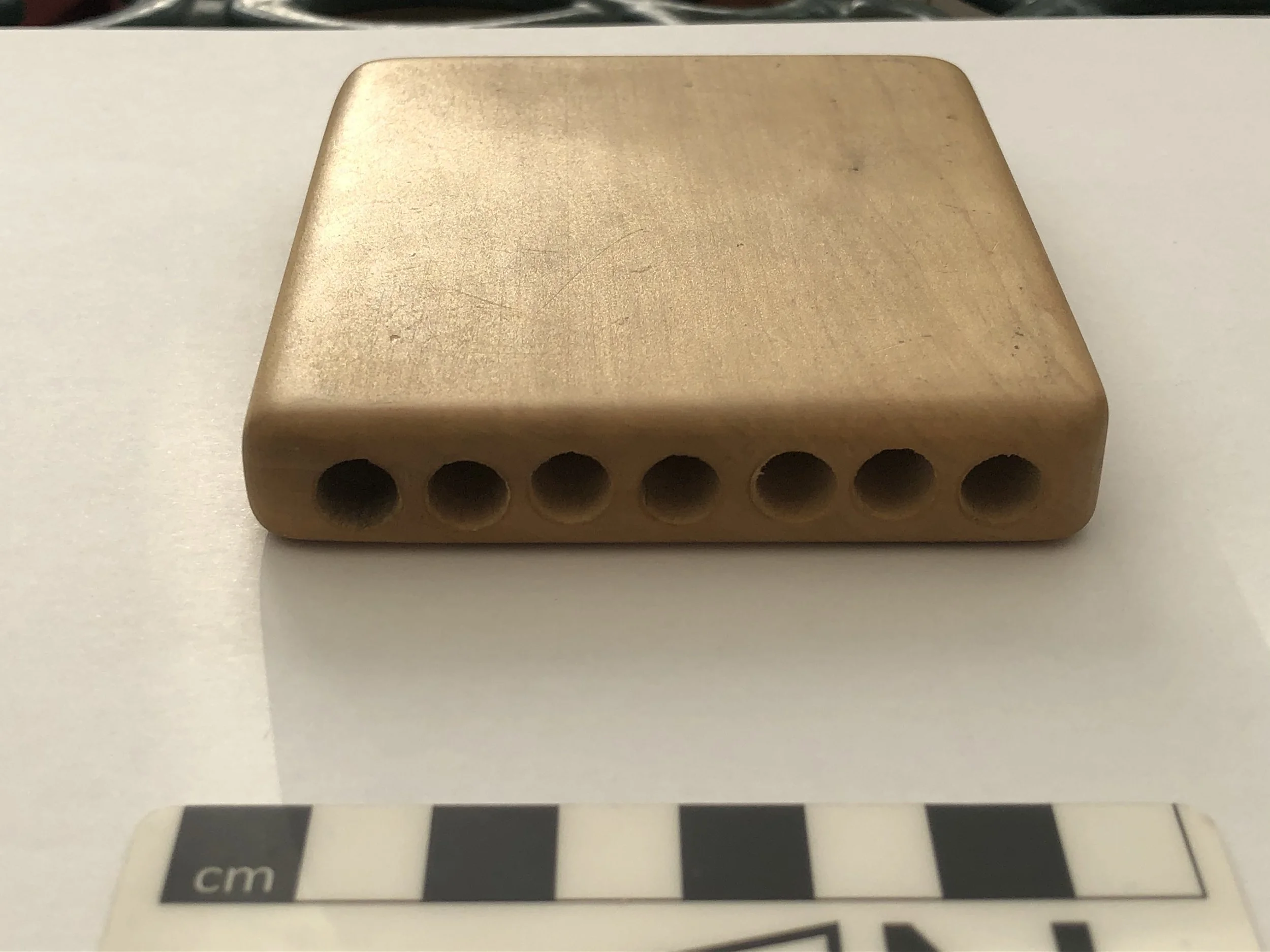Panpipes
Panpipes, sounded in the same way as an end-blown flute, are only known in wooden form from the Anglo-Saxon period, created from a single piece of wood. However, panpipes made of multiple individual, different length pipes, made of materials such as bone or wood could have been used for this purpose, held together with animal tendon. While the object from Southampton (described in potential instruments) may represent an example of this, other examples may have been lost or degraded or perhaps not recognised upon excavation.
Date: 866-1066 AD (Anglo-Scandinavian)
Type of Wood: Boxwood
Location Found: Jorvik, York
Type of Site: Urban
One of only two wooden instruments from England of this period, these panpipes were found at the Anglo-Scandinavian site of York. This unique set of panpipes has similarities to instruments found from the Roman period. Made from a single piece of wood, they would have required skill to create. The holes are only 2mm apart and it would have been imperative to ensure they were vertical and did not go into each other and ruin the instrument. These holes would have been created using a hand drill and a clamp may have been used to help hold the instrument straight.
If you would like to find out more about crafts of this period the following book is a good place to start:
Leahy, K. (2003) Anglo-Saxon Crafts. Didcot: Tempus.
This instrument is currently located in the Museum at the Jorvik Viking Centre.
Listen to the videos to hear what the a recreated set of these panpipes, made from lemon boxwood, sound like in woodland and open countryside.
Recreated panpipes based on the set found in York, made from lemon boxwood, played in woodland.
Recreated panpipes based on the set found in York, made from lemon boxwood, played in open countryside.
To continue exploring the wind instruments, click here.


